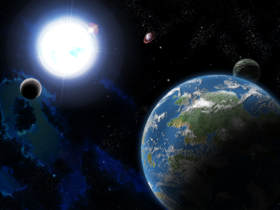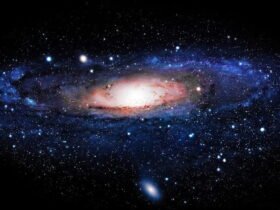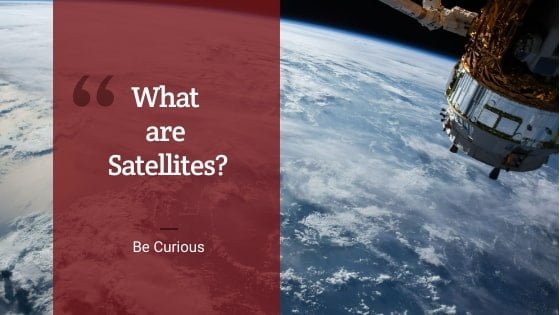What are Satellites?
Satellites are revolving bodies which revolve around the orbit of a body. As we all know there are two types of satellites in human history i.e. Natural Satellite and Artificial satellite (human made). In Natural satellite, objects like Moon, asteroids, small dwarf stone etc. comes which rotates around the planet. Anything man-made which rotates around the planet for certain time period is called artificial Satellite. According to NASA “a satellite is an object that moves around a larger object. We can say, Earth is a satellite because it moves around the sun. The moon is also a satellite because it moves around Earth. Earth and the moon are called “natural” satellites”. They are launched into space and orbit Earth or another body in space for a definite purpose.
Why do we need satellites?
Everyone knows that to see any larger object we have to see from further distance to get one picture. For that same reason we have sent the satellites at larger height in space so that we can see large pictures in small-scale of Planet surface. Also as space don’t have any atmosphere satellites can have very clear picture of Earth surface for studying.
Before the satellites, we use large tower to Transfer the Signal in straight path. But satellites cannot transfer more than 20-30 mile. Sometimes Mountains, tall buildings or Roughness in climate also block these signals. So satellite helps us to transfer the signal at very large distance easily.
From past many satellites have been sent to space and space garbage around our planet is increasing with the time.
How it Works?
To understand why satellites, move this way, we must revisit our laws of Newton. Newton proposed that a force — gravity — exists between any two objects in the universe. If it weren’t for this force, a satellite in motion near a planet would continue in motion at the same speed and in the same direction — a straight line. This straight-line inertial path of a satellite, is however, balanced by a strong gravitational attraction directed toward the center of the planet.
Fact: Gravity is only force which is attractive in nature.
How it Started?
“Man must rise above the Earth — to the top of the atmosphere and beyond — for only thus will he fully understand the world in which he lives.”
Socrates made this observation centuries before humans successfully placed an object in Earth’s orbit. And yet the Greek philosopher seemed to grasp how valuable a view from space might be, even if he didn’t know how to achieve it.
Those notions — about how to get an object “to the top of the atmosphere and beyond” — would have to wait until Isaac Newton, who published his now-famous cannonball thought experiment in 1729. His thinking went like this: Imagine you place a cannon atop a mountain and fire it horizontally. The cannonball will travel parallel to Earth’s surface for a little while but will eventually succumb to gravity and fall to the ground. Now imagine you keep adding gunpowder to the cannon. With the extra explosives, the cannonball will travel farther and farther before it falls. Add just the right amount of powder and impart just the right velocity to the ball, and it will travel completely around the planet, always falling in the gravitational field but never reaching the ground.
Overview of Milky Way and Andromeda galaxies. Click here to know complete information.
More information on Satellites
In October 1957, the Soviets finally proved Newton correct when they launched Sputnik 1 — the first artificial satellite to orbit Earth. This kick-started the space race and initiated a long-term love affair with objects designed to travel in circular paths around our planet or other planets in the solar system. Since Sputnik, several nations, led predominantly by the United States, Russia and China, have sent some 2,500 satellites into space.
Of course, launching and operating satellites leads to problems. Today, with more than 1,000 operational satellites in orbit revolve around Earth. Our immediate cosmic neighborhood has become busier than a big city rush hour. And then there’s the discarded equipment, abandoned satellites, pieces of hardware and fragments from explosions or collisions that share the skies with the useful equipment. Various orbital debris have been accumulated in space over these past years. This poses a serious threat to satellites currently circling Earth and to future manned or unmanned launches too.
Read Also:
























